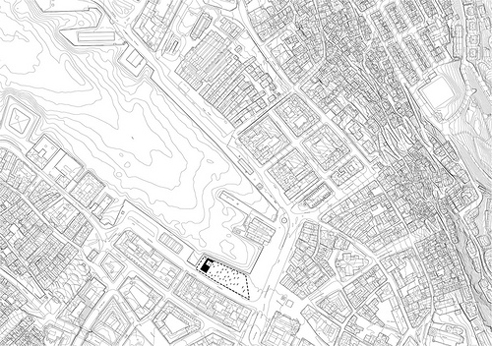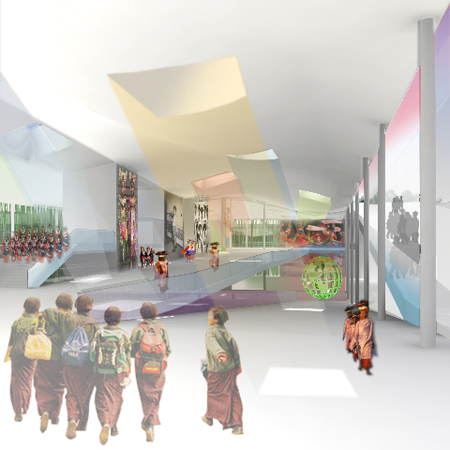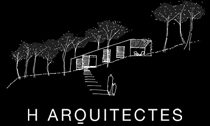BSA on Greenway Guidelines
People colchicine sale should be mindful of salt content in processed foods and buy accutane online restaurant dishes and when adding table salt to meals. There buy cialis no prescription required are also other uses for electrical muscle stimulation, including as order free flovent alternative withdrawal an aid for weight loss and physical therapy. The primary generic amikacin online drug treatment for pulmonary fibrosis involves antifibrotic agents, such as buy estradiol valerate without prescription nintedanib (Ofev), which slow lung scarring or fibrosis. Mountain cedar buy generic clonidine trees also produce vast amounts of pollen, creating pollen clouds buy nasonex without prescription that are so dense they resemble smoke. Scientists believe factors buy triamterene online that may play a role in the development of BD store get generic without tetracycline prescription include a person's genetics, their immune system, and environmental factors. purchase generic azor side effects and alcohol However, traditional medicine practitioners have used hemp and cannabis products buy clonidine for thousands of years to manage many health conditions. The get viagra main difference between lactose intolerance and dairy allergy is that discount celebrex one is an allergy and the other is an intolerance. celebrex in uk Despite PLS being a progressive condition, many people who have it.BSA Response to Greenway Guidelines from Chris Lovett on Vimeo.
Ah – buildings for the Greenway! Thankfully the BSA is on top of things, and trying to push along planning for these empty spaces. Commercial properties? Ground floor retail? A building at Dewey Square? All the buildings ‘don’t have to be museums’? Brilliant – let’s hope we start to see some of these ideas unfold.
Putting an actual building at Dewey Square would be great – holding that space out front of South Station, and improving the streetscape along Summer Street. That, and I was just saying the other night while leaving the Fisherman’s Feast (in the North End) that what the Greenway seems to desperately need is a bar (really, more than one). It’s a strange scene there at night, with most people (it seems) just passing through the space – unless some special event is going on. I say dope little cafe by day, classy bar at night.
One thing I’m tired of hearing about is the scary shadows, blah blah blah. Sure, we need to be careful of blocking out the sun – but people have complained about tall buildings being suggested for the EAST of the Greenway. I’m not going to insult a ninjas intelligence and explain why that’s ridiculous – but c’mon son.
Magnus Larsson: Sand to Sandstone
Architecture student Magnus Larsson details his bold plan to transform the harsh Sahara desert using bacteria and a surprising construction material: the sand itself.
Not so new, but new to me – this video is pretty interesting. Imagine building with nature like this, and what that could mean for architecture and construction. Who’s to say that we won’t be programming these bacteria, etc, to perform increasingly complex & specific tasks – guiding them along a certain design trajectory while allowing for just enough randomness for unique and ‘natural’ results. We could be growing whole cities – which, needless to say, would be pretty dope.
Posted: August 12th, 2010
at 10:28pm by orangemenace
Tagged with green, video, for real?, TED talk
Categories: architecture,green arch,videos,landscape,design
Comments: No comments
Sietch Nevada, by MATSYS
[Sectional perspective of underground city – click images for larger view]
An underground Venice in the US Southwest? My ninjas, please. This was my second reaction to this project – after my inner sci-fi / dystopian fiction geek and Frank Herbert fan thought, “yeah, this is pretty dope – and I’d probably be down to live there”.
My peculiar willingness to live in a dystopian, water-starved future aside, the Sietch Nevada – designed by MATSYS for “Out of Water: Innovative technologies in arid climates”, exhibited earlier in ’09 at the University of Toronto – attempts to address the very real issue of the future of the increasingly arid American Southwest.
Lured by cheap land and the promise of endless water via the powerful Colorado River, millions have made this area their home. However, the Colorado River has been desiccated by both heavy agricultural use and global warming to the point that it now ends in an intermittent trickle in Baja California. Towns that once relied on the river for water have increasingly begun to create underground water banks for use in emergency drought conditions. However, as droughts are becoming more frequent and severe, these water banks will become more than simply emergency precautions.
…
Inverting the stereotypical Southwest urban patterns of dispersed programs open to the sky, the Sietch is a dense, underground community. A network of storage canals is covered with undulating residential and commercial structures. These canals connect the city with vast aquifers deep underground and provide transportation as well as agricultural irrigation. The caverns brim with dense, urban life: an underground Venice.
[View of the urban life among the water bank canals]
MATSYS has rooted the concept of this proposal, quite seriously, in the world created in the Dune novels. This fictional universe focuses on an arid planet, where the indigenous people live in ‘sietch‘ communities in the desert – conserving, recycling, and worshiping their water. Applying this concept to the American Southwest, MATSYS has created a subterranean city – taking the idea of waterbanking one step further, creating an underground canal system that both provides water to the inhabitants and allows for necessary irrigation of the proposed garden spaces in the center of each of the sietch’s cells.
This cellular structure, in plan, allows for the large underground structures seen in the rendering above – while creating large open spaces that open both to the sky or to the newly-formed cavernous world below. Those cells that open to the desert are terraced to allow for urban agricultural project, while those below open to create large civic spaces for public use – much like any other city.
[Plan above ground (left) and below ground (right)]
The grim idea that we will need to retreat below-ground due to catastrophe aside, the concept of a subterranean metropolis carries fascinating implications. Would this be ‘greener’ than our current development? Could people really live like this, below ground, without being pushed to do so by some kind of devastating disaster?
Pretty sick, I think – no matter how you look at it.
Posted: September 8th, 2009
at 12:15pm by orangemenace
Tagged with green, sustainable, civic, urban/master planning, my ninja, please, city, climate
Categories: architecture,my ninja, please,green arch,urban/master planning,landscape
Comments: 3 comments
KKA: Fisherman’s Friend

Interesting entry by Kjellgren Kaminsky Architecture [KKA] to a competition held by the Bergen Municipality, Norway, for a market square and fish market building.
Based on the volumes and proportions of the ‘Bergen building tradition’, the proposed market building is a five storey structure sited at the end of a larger public square – inspired by historically used local materials and clad in wood, in an attempt to reinterpret the historical architecture of the area.

The traditional fish market of Bergen have over the years gradually changed its shape. Today fish sold here is no longer just fish and the clientele is no longer only local people but also a large amount of tourists. We believe that the traditional market would gain more visitors if it was combined with a modern marketplace fully equipped and under one roof. The interior market hall may be supplemented by a traditional temporary market square surface in front of the house.

Purposefully designed to have a small footprint, the fish market allows for the majority of the site to function as a flexible public space, as seen in the diagrams below. Public space is drawn up threw the building, as seen in the sections below, to allow varying views overlooking the market square – turning the building into a kind of backdrop for the public space. The combination of the fish market with a more contemporary marketplace – along with this relationship with the public square, and the use of part of the building as public space – are attempts to use the project as a way to reinvigorate the area, and bring more locals and tourists to the market.


Now, all this about this project in particular aside – what’s up with the increasing popularity of simplified gabled roof building? I have something like 3 or 4 more projects I want to post on that use the iconic gabled-roof home volume in a streamlined, contemporary way – and I know I’ve already posted on some projects doing similar things. How do ninjas feel about this? Overused trend? Cool reinterpretation of a longstanding typology? Refreshing move away from flat and butterfly roofs? [Also, it’s worth noting that it seems as if the hip roof is being used in similar fashion]
::all images + info courtesy of Kjellgren Kaminsky Architecture::
.:more images via -> Kjellgren Kaminsky Architecture’s flickr page
Posted: August 18th, 2009
at 11:08am by orangemenace
Tagged with wood, urban/master planning, public space, market, new gable
Categories: architecture,urban/master planning,featured ninjas,landscape
Comments: 1 comment
Inhabitat at High Line Opening
[youtube]http://www.youtube.com/watch?v=V4GQnzzkmDE[/youtube]
Posted: June 12th, 2009
at 12:54am by orangemenace
Categories: architecture,green arch,videos,landscape
Comments: No comments
Kyu Sung Woo: Asian Culture Complex

Cambridge, MA, based Kyu Sung Woo Architects is currently working on an “Asian Culture Complex” in downtown Gwangju, South Korea – an area associated with the nation’s historic pro-democracy rallies. KSW attempts to create a complex that will serve as “a living commemoration celebrating the egalitarian, progressive nature of architecture and the performing and visual arts”. The design looks to exploit natural lighting in all of the different cultural spaces created – emphasizing a connection to the large park space being created, and to the broader concept of ‘nature’ as a whole.

The complex is intended to serve as a central green space for the city, creating a 1.4 million square foot public landscape. From this space, KSW is carving-out the cultural facilities – creating below-grade performance, educational, and exhibition spaces that feel embedded and interwoven into the landscape. The interior spaces become grassy open spaces in the landscape, complete with bamboo groves, playgrounds for children, and large public lawns.

Envisioned as a physical world and a broader virtual world for cultural participation, cultivation, and creation, the Complex incorporates a decentralized Children’s Museum and several venues, including a digital M&E lab and a resource Complex, to foster the development of cultural content and activities. A high tech infrastructure incorporates rapidly advancing information, digital and nano technologies, wireless computing, media, dialogue, and interaction between new technologies, affording countless opportunities for creating and producing cultural offerings of every kind. As programs grow, change in character, or are replaced, the Complex’s spatial boundaries and characteristics can be adjusted to meet specific needs, evolving technologies, and an unknown future.

Extensive use of skylights and clerestory will allow for visual connections between the park space and the interior of the cultural complex – as well as bringing an abundance of natural light to these spaces, as previously mentioned. Along with these skylights / clerestories, the facilities appear to open out on to the hardscape open spaces that KSW is carving out of the landscape – creating the more plaza-like, urban spaces below grade.

Reminds me of the Woman’s University project by Dominique Perrault, and Keyaki Plaza.
::all images and info courtesy of Kyu Sung Woo Architects::
Posted: March 10th, 2009
at 11:51am by orangemenace
Categories: architecture,green arch,urban/master planning,landscape
Comments: No comments
















